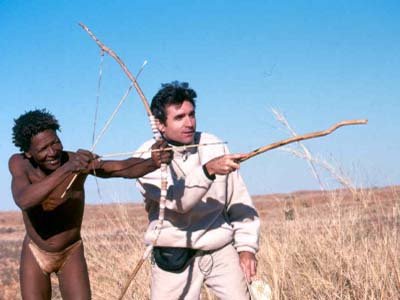Brad Olsen has been a regular travel columnist for Heartland Healing Magazine for several years. Select PDF versions of “Sacred Destinations by Brad Olsen” are here, along with a sample of World Explorer where Brad Olsen is a Contributing Editor and catalog designer for this magazine.
He is also an occasional contributor to Perceptive Travel magazine, including this article, “Discovering Forbidden Archaeology”, another on “The Sexual Draw of the Burning Man Festival”, and “Laotian Prayers on a Sinking Raft” about a trip down a river in Laos.
Brad Olsen travel articles from Heartland Healing
Click on each link to read as a PDF:
- Interview-HH1-1.pdf The first issue of Hearland Healing featured an interview with Brad Olsen. His column “Sacred Destinations” appeared in every issue since!
- MontStM-HH1-2.pdf Perhaps the most famous island-castle-monastery in Europe! Visiting Mont St Michel is like walking into a fairy tale.
- Malta-HH1-3.pdf The prehistoric temples of Malta might just be the oldest in the world. Their ancient mysteries are far from being understood.
- Fiji-HH1-4.pdf Paradise on earth comes with a cost.
- Tsunami-HH1-5.pdf Only 10 days after the Southeast Asian tsunami hit, Brad Olsen was on location digging through the aftermath — not only the physical destruction, but of people’s lives.
- Shasta-HH1-6.pdf The Magic Mountain of Northern California.
- SteAnne-HH2-1.pdf The greatest healing shrine in Canada.
- DevilsLake-HH2-2.pdf The most famous effigy mound lake in Wisconsin is little known outside the Midwest.
- Kalalau-HH2-3.pdf Trek along the rugged Kalalau Trail on Kauai to one of the last lawless hippy enclaves in America!
- Chaco-HH-3.1.pdf This article examines the many mysteries of New Mexico’s Chaco Canyon, once the largest metropolis in North America, then mysteriously abandoned.
- Philippines.pdf Take a tour to some of the best islands in the Philippine archipelago.
- Chautauqua-HH-3.4.pdf One of the oldest gatherings of the mind continues in New York state. Come and see how this venerable event has redefined itself in the 21st century.
- Burning-Man-HH-4.1.pdf This cover article examines the width and bredth of the social experiment that is Burning Man.
- BVI-HH-4.2.pdf Take a sailing journey around the British Virgin Islands in the eastern Caribbean. Beware of pirates!
- 5.4BighornWheel.pdf Explore all the astronomical and spiritual of the world’s most famous medicine wheel.
- 5.5Angkor.pdf Travel to the most famous ruins of Southeast Asia, and climb Cambodia’s most sacred mountain.
World Explorer Articles
 Top Four World Pilgrimage Sites
Top Four World Pilgrimage Sites
By: Brad Olsen
Pilgrimage is defined as: “1. A Journey to a sacred place or shrine. 2. A long journey or search, especially one of exalted purpose or moral significance.” All pilgrimages to holy places share the same purpose-the search for God and/or the self-a quest for interpersonal communion with a higher force. In some traditions, the destination is left deliberately ambiguous, whether the goal of the journey is actual or merely symbolic. Tibetan tradition relates the mythical Shambahala, or Shangri-La, which may have existed in ancient times, but might also have been an intentional metaphor for a state of consciousness. Throughout history, all world religions and indigenous tribes have encouraged a pilgrimage somewhere. Christians seek miracle cures at Lourdes, France or Chimayo, New Mexico; Muslims trek to Mecca and Medina, Saudi Arabia; Hindus journey to the Ganges River, India; Buddhists and other faiths to Mount Kailas, Tibet; and Jews worship at the Western Wall in Jerusalem, Israel. Early tribes and indigenous people primarily sought the wonders of nature for their spiritual quests, such as Australian aboriginals venturing to Ayers Rock; American Indians to sacred mountains in North America; or prehistoric South Americans to Lake Titicaca.


The 11th-century Tibetan saint Milarepa spoke of this peak: “The prophecy of the Buddha says, most truly, that this snow mountain is the navel of the world, a place where the snow leopards dance.” Just over the border from India, Mount Kailas is the source of four great rivers: the Karnali (Ganges), the Indus, the Sutlej and the Brahmaputra. All four rivers flow down from the lofty heights of Kailas like a giant mandala extending thousands of miles into the Indian seas. Many spiritual seekers believe that Mount Kailas represents the crown chakra of the earth. At the base of the mountain are two lakes, one shaped like the moon and one like the sun. From the solar lake flow the four rivers in four directions. Mount Kailas is one of the most traveled pilgrimage routes for Hindus, Bon Po, Jains, Buddhists and hearty travelers of all nations. Several well-trodden routes coming from all directions are well known by native Tibetans and relocated Chinese people. The sacred peak is known alternatively as the holy “Mount Sumeru” or “Meru.” Tibetans call the mountain Kang Rimpoche, meaning “precious jewel of the glacial snows.” From afar, the snow formations on the top of the mountain resemble a palace, complete with icy domes and turrets. Pilgrims wishing to walk the kora route around the mountain must travel on foot over high and desolate terrain for five days. Altitude sickness is more of a rule than an exception. Prepare for extremely cold weather and a lack of basic necessities, including shelter, food and fresh water.

4. Lourdes The small town of Lourdes was hardly more than a hamlet until 1858, the year a 14-year-old peasant girl named Bernadette Soubirous had the first of 18 visions of the Virgin Mary at a location called Grotte de Massabielle, by the river known as Gave de Pau. Over a period of several months the young girl and many townspeople gathered at the riverside grotto and viewed an apparition of Mother Mary, or the “Immaculate Conception” as she described herself. Once the girl’s visions were recognized by the Catholic Church, the fledgling village at the foot of the Pyrenees Mountains experienced a building boom and is now one of the most visited sites in southern France. Bernadette lived the rest of her life as a nun, was beatified in 1925 and canonized a saint in 1933. The holy city Lourdes attracts more than 5 million Christian faithful every year, making it the largest pilgrimage destination in France. Most of the visitors who come to Lourdes are hoping for a miraculous cure for their pain and suffering. Some 70,000 visitors per year are handicapped or have serious physical ailments and are given preferential treatment at the site. Lourdes has been called the “City of Miracles” and “Capital of Prayer,” which does correspond with a tangible reality. Well over 5,000 cases of spontaneous healing have been reported, and of those, 65 have been declared miraculous by ecclesiastic authorities following long and precise procedures. Such recognized miracles by the Catholic Church have undoubtedly led to the steady increase of pilgrims. Just outside town is the Cite Religieuse, the object of desire for the throngs of faithful flocking to Lourdes. Tucked alongside the riverbank is the candle-blackened grotto where the apparitions of 1858 occurred. Inside the grotto is a Virgin Mary statue and the source of Lourdes‚Äô holy water. The water from the spring has been scientifically classified as “clustered,” meaning it contains structured crystalline molecules more so than regular water, and is used for blessings and healing. Suspended in front of the grotto are rows of rusting crutches offered up by the hopeful. Rising above the grotto cliff is the first church, built here in 1871, and below there is a river-level basilica, which can house nearly 20,000 people for Mass. Because of its famous reputation for rejuvenation and abundant holy water, most modern Christian pilgrim routes in Europe now lead to Lourdes.
The Mysterious Effigy Mounds of the Upper Mississippi River Valley










